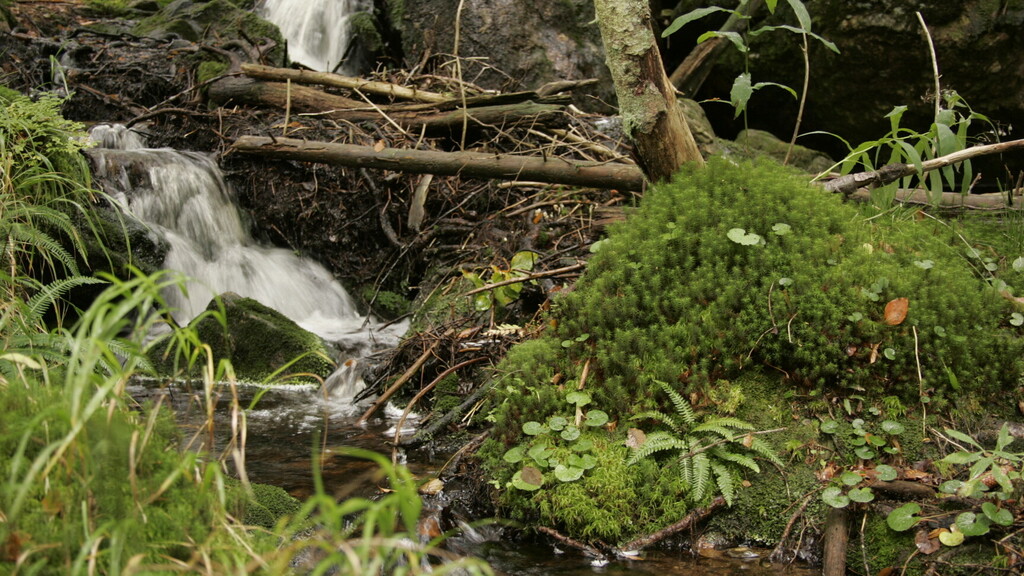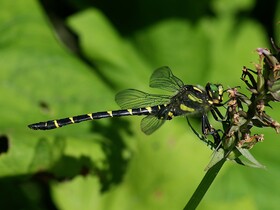

Naturefund bought and protect a hillside spring fen in cooperation with the Wilde Argen Stiftung association. The moor is located in the alpine foothills, extends over 8,853 m² and borders onto the Upper Argen, one of the last, unspoilt rivers in the mid-range mountains of Europe. The lesser marbled fritillary, the silver-washed fritillary, wild bees and the rare sombre goldenring, Germany's largest native dragonfly, can all be found here.

Start: January 2014
End: May 2014
At the Upper Argen, in the southern part of Baden-Wuerttemberg.
8.853 m²
The foundation "Wilde Argen" is a partner of Naturefund. She became the owner and guardian of the area.
Around the spring fen, spring gentian, daisy star, short-spurred fragrant orchid, bog-star, daisy star and elecampagne grows. On drier places also moor-grasseswhitlow, great horsetail, meadowsweet and buckbean. In the nutrient-rich margins grows beaded sedge, wood club-rush, brook thistle, horse mint, brown knapweed, wilde carrot and wild majoram.

The hillside spring fen "By the coal mine" is located in the alpine foothills and borders onto the Obere Argen (Upper Argen) one of the last wild rivers in the mid-range mountains of Europe. The lesser marbled fritillary, the silver-washed fritillary and even the rare sombre goldenring, Germany's largest native dragonfly, can all be found here.
The Argen rivers are the only ones with wild river characteristics in Baden-Wuerttemberg. In September 2013 the Argen was named river landscape of 2014/2015.
By the Obere Argen (Upper Argen) in southern Baden Wuerttemberg
8,853 m²
Ringlets, six-spotted burnets, speckled wood butterflies, Roesel's bush cricket, white admirals and the and the rare sombre goldenring, Germany's largest native dragonfly.
Low-growing, marshland full of sedges with Davall's sedges, spring gentians, short-spurred fragrant orchid, Marsh Grass-of-Parnassus, Elecampane.
In dryer areas there is meadowsweet.
In the outer-lying areas that are richer in nutrients one can find horse mint.
The hillside spring fen has been recorded as a moor region of national importance by the Bavarian environmental authority. Additional moor regions and petrifying springs with tufa formations can also be found nearby, giving this hillside spring fen a key role in the network of moors.
It was important to buy it at this point in time as the owner is determined to sell and a sale to third parties was conceivable, for example in order to reforest pine trees.
In southern Baden Wuerttemberg and western Bavaria, at the foothills of the Alps not far from Lake Constance, one can find the hills of Oberschwaben and the Allgäu. The Lower Argen originates at the confluence of Boerlesbach and Stixnerbach near the town exit of Missen. The Upper Argen originates in a swampy area to the north-west of Oberstaufen. Near Wangen the Upper and Lower Argen combine to form the Argen, which runs into Lake Constance after about 23 km, between Kressbronn and Langenargen. The Argen has a total length of approx. 117 km.
The Upper and Lower Argens carved deep into the steep slope on their way down to the lower-lying Lake Constance after the Ice Age glaciers melted away. This has created very rectangular-shaped valleys and terraces, gravel surfaces, steep slopes formed through rock formations and landslides, spring sources and temporary oxbow lakes. It has lead to the formation of a small area with a comparatively large selection of dry and wetland habitats with unique biodiversity.
The Wilde Argen Stiftung association is a partner of Naturefund. In the long run, the Wilde Argen Stiftung association will be proprietor and custodian of the area.
By purchasing the area, the Wilde Argen Stiftung association wants to ensure the area continues to be properly maintained in the future. In addition, measures are to be taken to optimize the moor, such as spring tapping remains to be removed and deepened river beds to be reshaped so that existing spring rivulets can trickle over the spring fens in harmony with nature. This should optimize the habitat quality of species such as the sombre goldenring.
As agreed with the environmental authority, faunistic research (e.g. insects, amnicolids) as well as updates of the floral mapping are to be carried out in order to better determine the conservation status of the area and any potential measures that need to be implemented.
Since 2013
Supports 7 projects
Since 2014
Supports 1 project
Since 2012
Supports 4 projects